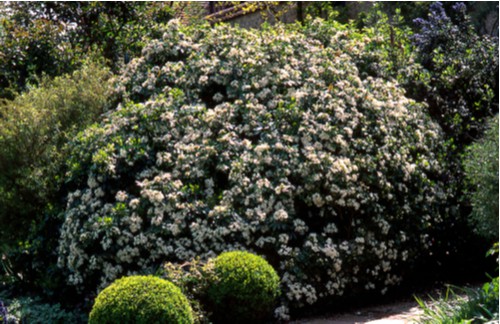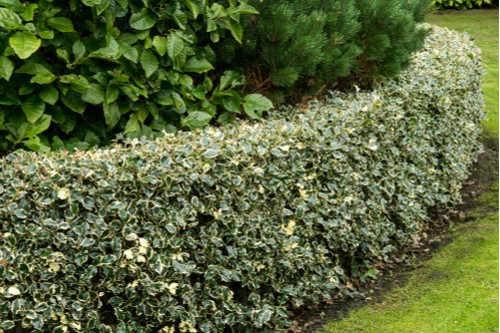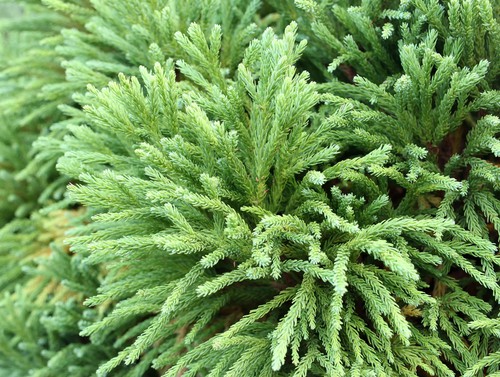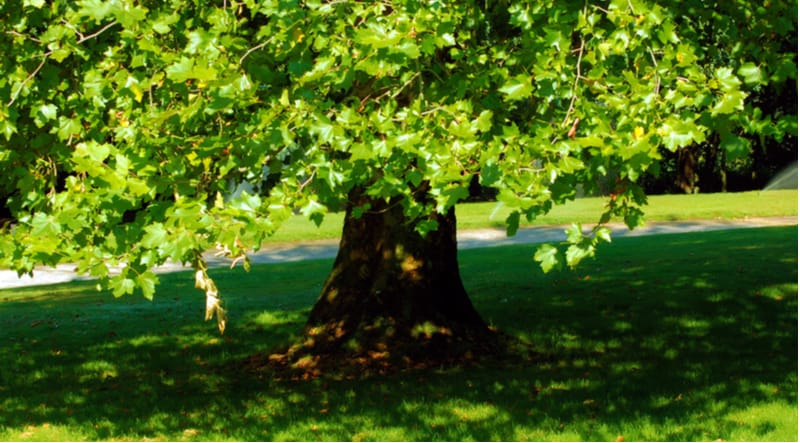Last updated on May 10th, 2022
Our site is reader supported, this means we may earn a small commission from Amazon and other affiliates when you buy through links on our site.
Not all hedges need to require hours of work to maintain them and many require limited pruning too. In fact, if you’re short on time the best hedges are those that are low maintenance and slow-growing although they can take a little longer to reach your desired size.
The reason you may want a slow-growing hedge is that it will mostly take care of itself and you won’t have to prune it all the time. A loose hedge is great for a wildlife garden as well but you don’t have to keep it unkempt. Things like Holly can be grown and lightly clipped once or twice a year to keep the size, shape and structure that you want.
Below are some great shrubs that are usually grown as standalone ornamental shrubs but also make excellent hedges. When we say a slow-growing hedge, what we are referring to are shrubs that grow quickly enough to form hedges but are not as demanding and fast-growing as plants such as leylandii conifers and laurels which are the complete opposite.
1. Choisya – Mexican Orange Blossom

The ‘Mexican Orange Blossom’ is great for areas with full shade or partial sun. Being evergreen the foliage will remain throughout the year, making it a perfect low maintenance hedge but more importantly, it produces citrus-scented flowers every spring and then subsequently at the end of autumn.
This means you cannot only create privacy or structure for the garden but gives off a beautiful scent at the same time. In order to keep the size and shape that you want you can prune it ever so often, which is best done after flowering.
2. Potentilla – Cinquefoil

This shrub makes a wonderful flowering hedge. There are a lot of varieties out there, however, the shrub Potentilla is better for hedges because you can get some lower growing perennial varieties too.
They flower quite heavily at the beginning of spring all the way through summer. Perhaps the best feature is that they are tolerant of poor ground conditions so you won’t have to do much to alter the soil where you live. The only downside is that they are not evergreen so do lose their leaves for winter.
No products found.
3. Illex – Holly

Native Holly is well known around the holidays but you can grow it throughout the year as a hedging plant and there are many varieties available, with varying colours of foliage from green to cream and yellow such as that of the variety ‘Golden King’.
Low maintenance, evergreen, and slow-growing, you will not have to spend a lot of time tending to it or pruning it. You can choose between glossy green or bright and variegated foliage depending on the variety of Holly, but no matter which variety you choose it will easily fill up the area you want to create privacy complete with stunning red berries if you choose a make variety to bring about flying friends.
No products found.
See our top picks for attracting birds into your garden in this guide.
4. Fagus – Beech

Beech can make a dense hedge and is quite cost-effective if you plant it in the winter because they are available to purchase as bare-root plants. There are two types to choose from, one has green leaves in summer while the other has purple leaves, as pictured above. In the green variety, the leaves will turn lime green in the spring and darken with sun exposure over the summer until they turn a coppery colour in the winter. The purple variety also known as Fagus purpura has purple leaves and turns coppery in winter, just like the green variety.
Beech hedges are deciduous but you can keep the leaves on the plant throughout the winter to keep your privacy because they do not lose them until the new leaves in spring push them off.
While they do well with just about any conditions, the one thing they won’t tolerate (as with most plants) is being waterlogged so make sure that there is good drainage where you plan to cultivate your hedge, especially if you want to reduce the amount of maintenance you have to do after planting.
5. Osmanthus

If you want a low-maintenance hedge this is a slow-growing evergreen shrub that produces fragrant white flowers every spring. For areas that get partial sun or full shade, this is a great consideration.
This slow-growing hedge will do quite well in almost all soil conditions, just make sure that you have good drainage, as with moist soil. If it gets waterlogged it won’t thrive as well and you may have to do a bit more work than you intended to keep it going or, worst case scenario, they can even die. Preparation is key to keeping them growing well, which means preparing the ground with lots of organic matter to improve drainage if needed.
6. Taxus baccata – Yew

Yew is a tough, slow-growing plant that is perhaps best known for having very few pests or diseases. It provides a rich, dark green colour of foliage all year round and needs very little from you.
However, with this, it’s important that you make sure there’s ample drainage where you plan to cultivate your hedge because it will not thrive if it has wet feet.
7. Barberry – Berberis

Lower growing varieties of this plant will create a colorful hedge. In fact, certain varieties produce purple foliage, yellow flowers in the spring, and glossy red berries throughout the remaining seasons.
If you grow Berberis you should prune it ever so lightly just to make sure it doesn’t outgrow the space but that’s assuming you want to keep it uniform in a specific area. There are both evergreen and deciduous varieties to choose from, with the Berberis darwinii being a popular evergreen variety and the Berberis ‘Harlequin’ being a popular deciduous purple variety with purple leaves with cream edges.
8. Cryptomeria japonica ‘Vilmoriniana’

This conifer is slow-growing and requires limited pruning. It does best if it gets a little bit of shade. In fact, that limited bit of shade is what produces the best colours. It grows well in moist but well-drained soil, perfect for any garden. The foliage does seem to turn to a coppery colour in winter too.
Rest assured with any of these options you are sure to find a low maintenance but highly effective hedge. Take note, however, that with all of these shrubs you have the option of letting them grow wild and free for a more untamed hedge, creating an informal structure.
By the same token, you can choose to prune them annually or trim them here in there to make sure that they maintain the structure and shape you want, especially if you are trying to keep them as a manicured hedge (or perhaps simply not allow your plants to grow into your neighbour’s garden).
Last update on 2025-12-14 / Affiliate links / Images from Amazon Product Advertising API








